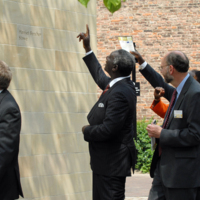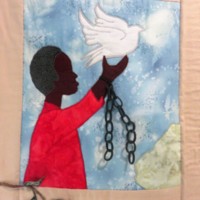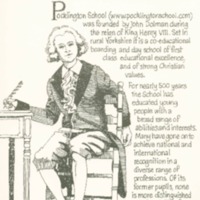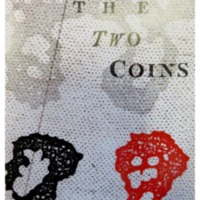
Opening of the Wilberforce Institute for the study of Slavery and Emancipation (WISE)
The Wilberforce Institute for the study of Slavery and Emancipation (WISE) was officially opened in Hull in 2006 in anticipation of the city's bicentenary commemorations. The University of Hull research centre specialises in researching the history of slavery, while also examining contemporary slavery and human rights abuses in the present day. The patron of the institute is Archbishop Desmond Tutu and the institute was opened by then President of Ghana, John Agyekum Kufuor. The WISE Humanitarian Wall commemorates historical and contemporary figures in the struggle against slavery, including Olaudah Equiano, Harriet Beecher Stowe and Nelson Mandela.

The Abolition of Slavery Quilt
The Abolition of Slavery Quilt was created to commemorate the bicentenary by the Freedom Quilters of Wisbech, a community group with an interest in patchwork and quilting. The quilt is made of several panels, one of which depicts the Thomas Clarkson memorial in Wisbech town centre; other panels stress the link between Christianity and the abolition of the slave trade. It was displayed at Wisbech Baptist Church at the Annual Rose Fair in July 2007. The Rose Fair Flower Festival raises money for charity, and in 2007 had a theme of 'Heroes of Freedom'. The quilt was also loaned to Peckover House, a National Trust property in Wisbech. It remains on display at Wisbech Baptist Church.

William Wilberforce Memorial 2007
William Wilberforce was a pupil of Pocklington School near York for five years, 1771-1776. In 2007 the School erected a full size bronze sculpture of Wilberforce as a school boy. The statue and memorial plaque were unveiled in September 2007 by the Archbishop of York, Dr John Sentamu.

The Two Coins
A bronze statue of the slave trader Edward Colston was erected as a memorial in Bristol city centre in 1895. The monument and the memories it evokes of Colston's trading in enslaved Africans is frequently used as a point of reference for Bristol's contribution to the transatlantic slave trade. The Two Coins is a visual sculpture and moving image installation created by artist Graeme Mortimer Evelyn to revolve around such monuments. The installation aimed to present an unprejudiced historical legacy while highlighting collective responsibility to prevent forms of 21st century slavery.